
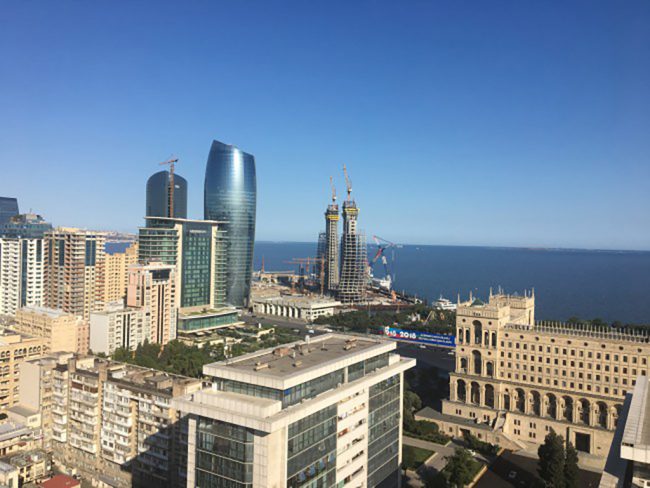
 The lack of job opportunities and development prospects in the rural regions of Azerbaijan has provoked a population influx to the capital, and the rapid growth of Baku’s population has increased the load on the city’s infrastructure. Problems faced by the metropolis and its inhabitants include gas cutoffs, waste management issues, water shortages, and traffic jams.
The lack of job opportunities and development prospects in the rural regions of Azerbaijan has provoked a population influx to the capital, and the rapid growth of Baku’s population has increased the load on the city’s infrastructure. Problems faced by the metropolis and its inhabitants include gas cutoffs, waste management issues, water shortages, and traffic jams.
The fate of one district
Sabina spent her childhood with a view overlooking a wasteland — the never-ending subway construction, rain-washed construction pits, a dull landscape. ‘We got a flat here [in the Azi Aslanov district — a dormitory suburb of Baku] in 1985’, Sabina tells OC Media. ‘There were only 9-storey concrete buildings and khrushchovkas here then. My parents hadn’t wanted to move so far away, but we were attracted by the promise that in five years time, a subway station would be built here’.
The Azi Aslanov subway station was not completed until 2002. But once it was new neighbourhoods started to sprout up. ‘I remember how, as a child, I would go out to the balcony and see the nine-storey buildings across from me beyond the wastelands’, recalls Sabina. ‘When the electricity went off in our block in the 1990s, we were guided by the light from those houses. Now, behind the new buildings, they are not visible at all’.
The population of Baku began to grow quickly in the 1990s, at first with an influx of refugees and forced migrants, then later with the oil boom that drove many to the capital in search of work. In 1992, when Sabina was still in school, new students were joining her class almost every day. Apartment blocks and supermarkets began to rise up around the Azi Aslanov district, and still today, mass construction is ongoing. People continue to pour in from the city centre and from other regions of Azerbaijan.
A large compound near the Azi Aslanov subway station comprises four 16-storey buildings overlooking a playground. Its residents are proud of the fact that they have everything they need right in their yard — a hairdresser, a dentist, a large supermarket, some small shops, a hardware store, an inexpensive café, and a kindergarten. But there is also a place for the community’s rubbish disposal, which by evening always becomes a more of a landfill. Overpopulation in the district has left public utilities unable to keep up with rubbish removal. Although sanitation vehicles come to remove it twice a day, it’s never long before the containers are overfilled again.
Why the numbers don’t fit
According to the State Statistical Committee, 2.26 million people live in Baku, but many experts do not believe this count. Unofficial estimates put the city’s population somewhere between 3 million and 4.5 million people.
According to the law, people arriving to the city for temporary residence must register themselves. Emina Isayeva, a housing lawyer, tells OC Media that few actually comply. ‘It’s necessary to register at a local police station. For this, an official rental agreement should be concluded, which must be notarised and then submitted for tax purposes, as per the official regulations. In reality, though, an informal agreement is simply made between the landlord and the tenant’.
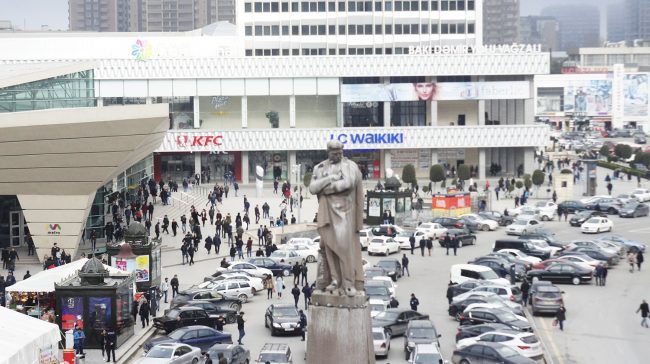
Economist Toghrul Mashalli told OC Media that in the off-season for agricultural work, the population of Baku reaches 5 million people. ‘The difference in these indicators stems from the fact that our State Statistics Committee counts the population by their registered places of residence, and that this data is far from reality. Often a flat is registered to only one person, but five people are living there. One person may even be registered in three or four flats, but live in just one and rent out the others. In any case, the census in our country is a pure formality — in very few cases do officials actually go to check the flats and houses’.
Anar Valiyev, an expert in urban studies, adds that the difficulties in accounting for the population complicate the city’s public transport infrastructure. ‘ This means that we are unable to properly schedule public transportation — how many buses on each line we need, how often the should subway run, and so on’, he told OC Media.
Overpopulation has also created serious traffic problems. Over the past few years, many new roads have been built, transport hubs created, and roads expanded — but this hasn’t eased the congestion. Architect Aysel Huseynova believes that separate roads should be constructed for trucks.
Overpopulation and infrastructure
A general plan for the development of Baku was approved in the late 1980s and is still formally in force. It was set with the expectation that the population of Baku would be 2.26 million in the year 2000. Nevertheless, these plans exist purely on paper. In reality, city construction takes place at random, and Baku’s municipal infrastructure hasn’t been updated since the Soviet times. Thus the infrastructure of 1986, which was designed for 1.78 million people, today serves a city of around 4.5 million — and this creates problems.
Among the most serious issues with Baku’s public infrastructure is the lack of pipes — the high load on the gas supply network and the sewage system. When it rains, the roads flood, blocking traffic.
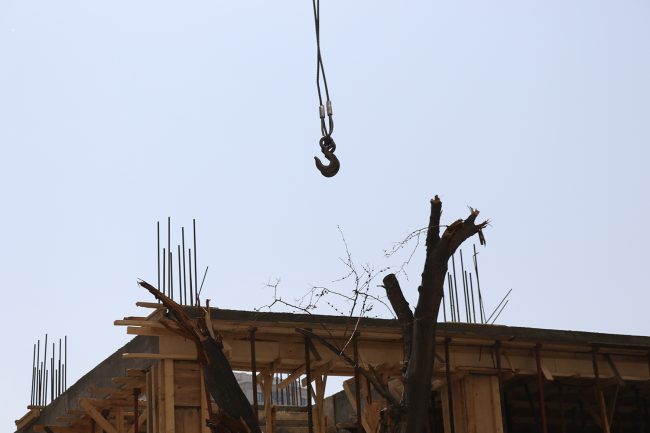
Ilham Shaban, Director of the Caspian Barrel Oil Research Center, explains the state of public infrastructure with the fact that in the post-Soviet years, the population of Baku and its suburbs rose without a corresponding increase in the infrastructure needed to accommodate these new people. He says that five-storey buildings in the suburbs of Baku were replaced with high-rise buildings and commercial centres, and any vacant areas simply used for further construction.
‘Abroad, they build the infrastructure first, and only then do they construct the buildings’, Shaban told OC Media. ‘We only started to build the infrastructure within the past five or six years, but it should have been done at least 15 years ago’. He added that insufficiencies in public infrastructure are responsible for frequent gas supply interruptions that occur every year as winter sets in.
Decentralisation as a solution
Economist Toghrul Mashalli says that the issues of public infrastructure in Baku are relatively easy to solve — they are just contingent on development in the rest of the country. People move to Baku because it is difficult to find work elsewhere. Even though prices are higher in the capital, it is possible to earn a living wage.
According to Architect Aysel Huseynova ‘today, young people do not want to engage in agriculture. They would rather go to Baku, to study and work. Almost all the universities are there, plus the majority of workplaces, which leads to overcrowding. The number of residential buildings grows along with the number of cars. All of this influences the ecology’.
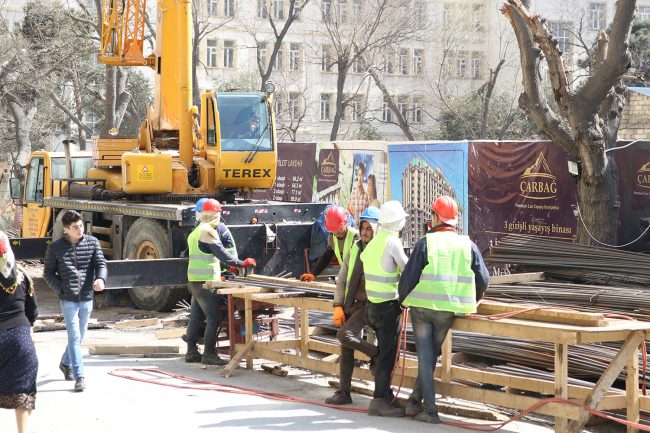
To address the overpopulation, she suggests unloading the city of its universities and carrying out administrative operations from outside the capital. She proposes moving large universities to Ganja or Shamkir. ‘It’s possible to redistribute large enterprises to different regions of the country, and to do it so that each region has its own speciality’, advises the architect. ‘Additionally, a system of distributing the postgraduate population that existed during Soviet times should be restored. This would decrease the overcrowding of Baku’.
On the other hand, according to urbanist Anar Valiyev, the city’s problems are not necessarily caused by its demographic situation. ‘Baku can host 3, 4, or 5 million people. The problem actually lies in proper planning and the logistical management of transport and infrastructure’. He says that there is no city that can boast of an optimal population size — a city is always overpopulated. ‘The question is, which strategies are used to make the population feel safe, free, calm and content in an ecologically friendly environment’.
‘Baku cannot remain the way it was 30 years ago’
During Soviet times, there were many green spaces in the city, and many buildings had a view to the sea. Town planning regulations forbid the construction of high-rise buildings on the coast, says architect Aysel Huseynova. But now, both the situation and the standards have changed. ‘Due to the high influx of capital, businessmen are constructing tall buildings in small areas’.
Urbanist Anar Valiyev says that construction, which is constantly ongoing in Baku, is related not to the housing needs of the people, but rather to the resources and opportunities of private developers. ‘Nobody can say to what extent the supply of housing corresponds to the city’s needs’.
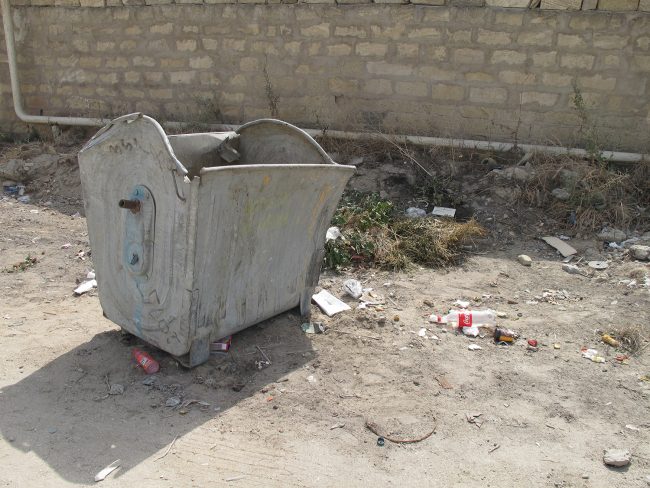
The ratio of housing area to residents is higher today than it was in the Soviet years, says Valiyev. The days when three children would huddle in a 10-square-meter room, and several generations of one family could live in the same one-room flat, are over. Nevertheless, many of Baku’s older residents are nostalgic for the past.
Anar Valiyev says that ‘from a sociological perspective, Baku during the Soviet era was not a city in the strict sense of the word’. According to him, it was a big village, an administrative centre. ‘In the Baku of those years[…] everyone knew each other. Without leaving their usual social environment, they were aware of everything that was going on’. The urbanist calls anonymity and diversity the main features of a metropolis, meaning that Baku has only now become a proper city by definition. ‘You don’t know who your neighbour is, nor do you know the man walking towards you’.
He adds that people tend to overestimate the charm of old streets and the stability of tradition: ‘Baku cannot remain the way it was 30 years ago, and even if it could, to try to preserve it would have been wrong. The city develops, and it’s the way it is precisely because it changes. First and foremost, the level of interpersonal relations should be sacrificed. The patriarchy leaves, which has its pros and cons. Although it increases the people’s social loneliness, it also reduces the pressure on individuals from society’.
Often, this is precisely why young people from across the country rush in to the capital – for the opportunities and for the freedom.
This article was prepared with support from the Friedrich-Ebert-Stiftung (FES) Regional Office in the South Caucasus. All opinions expressed are the author’s alone, and do not necessarily reflect the views of FES.







